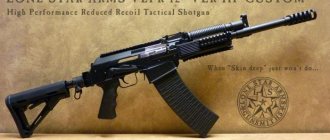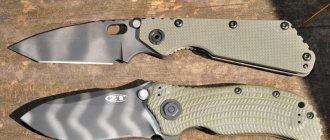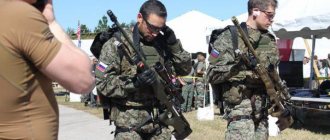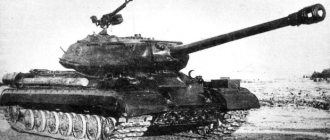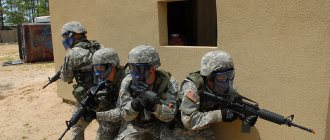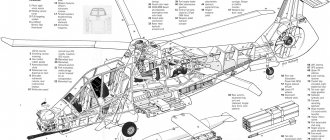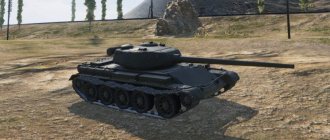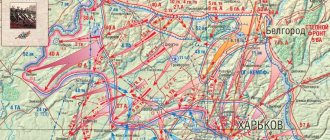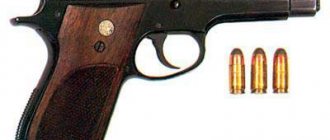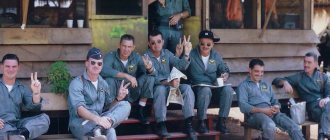| A long time ago, in a galaxy far, far away... The events and phenomena described in this article happened a long time ago, and only a couple of oldfags remember them. But Anonymous doesn't forget! |
| This article upsets blacks. Fix this before it's too late. |
| Civil War in Somalia | |||||||||
| |||||||||
| Parties | |||||||||
| USA, UN peacekeepers | Somalis | ||||||||
| Commanders | |||||||||
| William F. Garrison | Mohammed Aideed | ||||||||
| Strengths of the parties | |||||||||
| The brave American military, bringing only Light™ and Democracy™, Malaysian and Pakistani peacekeepers | Natives armed with Kalash | ||||||||
| Losses | |||||||||
| 18 paratroopers, two black hawks and broken morale | Between 200 and 3,000 Somalis | ||||||||
The Battle of Mogadishu
was an epic battle that took place in Somalia between the US military, UN peacekeepers and local residents unhappy with the presence of foreigners. It happened on October 3, 1993 - on the same day as no less epic events, which wildly symbolizes.
A simple anonymous person who doesn’t like to glue tanks knows this battle from the Oscar-winning action movie “Black Hawk Down,” and the anonymous anonymous person has heard about it as one of the biggest failures of the USA in planting democracy abroad.
[edit] Background
Since 1969, the East African country of Somalia has been ruled by a conventional African military dictator, Mohamed Siad Barre. At the beginning, he was a great friend of the Soviet Union and built his only party in the country according to the Soviet model. But, despite the declared socialism, Barre wanted to build Great Somalia - a state that included the entire Horn of Africa, plus the eastern territories of Ethiopia, inhabited by Somali tribes and called Ogaden. It was for them that in 1977 the Somalis started a war with the Ethiopians.
By that time, in Ethiopia, the emperor (the earthly incarnation of Jah) had been hijacked and buried in his outhouse, and a socialist junta led by the black Stalin had come to power. The Soviet leadership seemed more reliable than the Somali king, and therefore the USSR decided to support the Ethiopians. Moreover, all the changes of shoes took place along the way, and in some battles, Soviet military advisers helped the Nigros from both sides of the conflict (!). As a result, after a year of war, the Ethiopians, with the help of our advisers and Cuban soldiers, defeated Barre and buried his dream of a Great Somali Empire.
After the failure of the war, quite a significant part of the army and population realized that they had been screwed, and with help from Ethiopia they began to organize groups to oust the dictator. At first, everything was limited to guerrilla warfare, but by 1988 the situation for El Presidente became completely bad: despite the guro organized by government troops from the opposition and hostile clans, Barre’s truce with the Ethiopians and the bombing of undesirable cities, the opposition began to gain the upper hand and in 1991, essentially threw Barre and his supporters to the very south of the country.
The victory did not satisfy the warlords' thirst for blood. Immediately after the wine, they fought among themselves, dividing the country into personal possessions and finally screwing up the already destroyed frail infrastructure. As a result, a massive famine broke out in Somalia in 1992, killing approximately 300,000 Somalis. Seeing the suffering of the starving inhabitants of this African country, good whites sent a humanitarian mission there. This is where it all started.
Tags: Somalia, civil war, black hawk fall Last updated 12/22/2015.
The civil war in Somalia is traditionally referred to as a large-scale military conflict that lasted throughout the 1990s, marked by attempts by the world community to restore order (a by-product was the story on which the film Black Hawk Down was based) and led to the almost complete destruction of Somalia as a state . The civil war at this stage covered almost the entire territory of Somalia, as a result of which a huge number of civilians died, incl. from hunger.
By the beginning of 1990, the civil war was already in full swing (see also the insurgency in northern Somalia). By the end of 1989, only the capital and surrounding areas remained in the hands of the formal leader of the country, Barre; The 4th division of the army fought in Golgodoba and Balambala, the 5th in the south in Belei Van, special forces (“red berets”, “duub kaas”) were charged with maintaining order in Mogadishu and were ordered to deal with any suspicious types. Torture and murder became commonplace in the capital. Almost all the clans of the country took up arms against the president, but Barre, despite the final break with the United States, then his main allies, held out for another year. He even pretended to reform the political system by resigning as leader of the ruling party, only to be replaced by his own son-in-law. They also tried to promise free elections next year, but in parallel there were constant reprisals against the opposition, the loudest of which thundered on July 6, 1990 at a football match, when the outrage against Barre in the form of chanting anti-government slogans reached the proportions of a riot, his guards panicked and opened fire, and that part of it that was outside opened fire on those running out; at least 65 people were killed and 300 were injured, and relatives were not given the bodies for burial.
At the end of the year, militants of the United Somali Congress (USC), staffed by the Hawiye, on whose territory the capital is located, came within 50 km of the capital, but did not move forward, presumably fearing retaliatory reprisals by the “barristas” against the civilian population. In December 1990, USK fighters secretly entered the capital (80% of the population of which were Hawiye) and, after four weeks of street fighting, achieved victory over the 77th Division and the “Duub Kas” (which were led by Barre’s eldest son) who defended the regime in this last battle. The dictator himself took refuge in his fortified Chinese-built Villa Somalia compound near the capital near the international airport, where he had a bunker, and effectively admitted defeat. January 27, 1991 is considered the day the Barre regime fell.
However, instead of agreement and reconciliation, the fall of the Barre government led to the revival of inter-clan strife, which initially resulted in the expulsion from the city of clans associated with the regime, primarily the Darod. The formal interim government was headed by Ali Mahdi Mohammad from the USK, their prime minister was Ghalib (Issac, but not a member of the SNM). Since other factions of the Somali opposition were not consulted, this led to problems between clans, and even within them. Mohammad relied on the Abgal sub-clan; his main opponent was Mohammed Farah Aidid, the military leader of the USK, who drew support from the Khabar Ghidir sub-clan. Between them, in fact, the military conflict that received the most publicity broke out in Somalia (but not the only one, but only one of many). In fact, this war was a squabble between subclans - the nomadic Khabar Gidir, who controlled the suburbs of Banadir and the lands north of Mogadishu, and the sedentary Abgal, who, in fact, controlled the territory of the city. Mohammad had a numerical superiority, but Aideed had more heavy equipment, although it was more difficult to use due to the lack of qualified personnel. For this reason, by the way, Soviet models of equipment received the approval of the belligerents, since they were easier to manage. There were also various homemade products, for example, an air-to-air missile from a MiG-17 mounted on a jeep. In September 1991, the internecine war began in all its glory, and in mid-November of the conflict, Mohammad’s supporters were driven out to the north of the city, leaving the area of the presidential palace in the center; Aidid still had the southern part of the city with the airport and seaport. Both sides manipulated the food supply, creating an artificial famine, and between 300 and 500 thousand Somalis died as a result of the famine, including up to 40% of the population of Baidoa. The fighting in the city from mid-November 1991 to the end of February 1992 in Mogadishu alone cost 14 thousand dead and 27 thousand injured - this, however, is just a figure derived by statistical methods based on an examination of those who reached the surviving hospitals. The Somali Youth organization, which advocated the slogan “drop your guns, pick up your pen, seek knowledge,” tried to hold a march with the students of their school, calling on the USC to stop the war, but were shot on the way.
Since the spring of 1992, the situation has generally stabilized, excluding outbreaks of inter-clan clashes; the zones of control of the warring subclans were separated by a “green line”, marked on the ground, as I read, by a line of burnt tires.
Meanwhile, on January 27, 1991, Barre left his residence attacked by rebels in a tank, going to Gedo, in the south of the country, his family nest. The basis of the “barristas” forces was the Darod, and specifically the Marehan and Majertin subclans. The USC pursued Barre's supporters through the Bay and Juba, accompanying the advance with casualties and destruction that brought these two breadbasket regions of the country into a state of complete anarchy and ruin. In March 1992, Barre’s supporters, led by his relatives, followed the same road in the other direction, again ravaging these lands, but both voyages ended in vain - the USC was unable to bring the south of the country under its control, and the “barristas”, registered as the SNF, did not created a significant threat to Mogadishu. Since the beginning of 1992, the country has actually disintegrated into parts controlled by military groups based on clans and subclans: in addition to the above, SNM Issak, SSDF Majertin, SPM Ogaden, SDA Gadabursi, SDM Rahanwein. The leaders of individual groups received the nickname “warlords”. Everyone, from warlords to ordinary citizens, robbed whatever they could, right down to telephone wires and knocking out reinforcement from concrete ruins, and all the years after 1991 were collectively called the “era of cannibalism.” Devastation reigned in the country, famine began in the interior regions, in some places up to 90% of the population was starving, largely due to the efforts of warlords - there was famine in Baidoa, and on the coast fishermen distributed fish for free, since there was nowhere to put it and there was no way to deliver it to the thirsty.
In 1992, the UN began to discuss the need to do something regarding Somalia, and in February an observation mission was sent; from the beginning of summer, the delivery of humanitarian aid began, but the warlords stole such a percentage of it that no increase in volumes helped alleviate the plight of ordinary Somalis. The first mission did not have its own military units at all, being forced to hire local ones. It was from this practice, by the way, that the name “technical” came for classic Somali combat vehicles. Typically a "technician" is a four-wheel drive vehicle, often a Toyota or Ford, with a turret-mounted machine gun (12.7 mm most often) or a recoilless rifle, sometimes a mortar, anti-tank or anti-aircraft artillery; and it was nicknamed that way because the UN mission, due to the lack of its own forces, hired them, carrying out their “work” under the heading “technical assistance”. A group of 70 militia hired to provide security received $200 a month per brother plus food. At the end of the summer of 1992, it was decided to introduce a military peacekeeping contingent into the country, which was charged with ensuring the delivery of humanitarian supplies to their intended destination and disarming the warlords. The first detachments of peacekeepers arrived on September 13, but the situation still remained difficult, plus Aidid did not get along with the leadership of the mission and in every possible way interfered with its work. The US leadership considered a less dramatic way to show commitment to humanitarian values, but Colin Powell insisted on direct and decisive military intervention. On December 3, the UN accepted the US proposal to ensure the security of the delivery of humanitarian supplies. On 7-8, negotiations took place with the leaders of the factions that own Mogadishu, who were intimidated by the US power demonstrated during the Gulf War and were forced to agree to the arrival of the Americans. In December, American units began to arrive, which at first achieved success - they managed to stop the “barristas” near Kismayo, imposed a reduction in armed forces on the clans in Mogadishu, and stopped the work of arms markets (what is the scale of trade in these, says that one of them was seized 2 ARS, a small tank, several "technicians" and 250 barrels of small arms. Attempts were also made to achieve a political solution, but they did not end in anything. The mission also encountered problems at the everyday level, the strange and unusual behavior of local residents irritated the peacekeepers and led to unpleasant incidents. Local gangs demanded that their proteges be taken to serve in the representative offices of international organizations and peacekeepers, otherwise they would cause trouble, but they arranged them anyway - an attempt to build a school in Baidoa ended on the very first night with the theft of all construction materials directly from the construction site, which was guarded by the hired local gopniks Somali kids constantly ambushed the roads - first they set up obstacles that slowed down the progress of the convoys, and then they robbed the soldiers' provisions and personal property - sunglasses were especially popular. This practice led to at least two bad incidents - first, a soldier shot a 13-year-old Somali who was running towards the convoy with some kind of box (the box was from military rations, but was considered a grenade), and another time, a Marine shot a Somali who stole his sunglasses . The second was convicted, the first was credited with necessary self-defense. There were also cases of a different kind, the French legionnaires shot at a used minibus with citizens, which was unable to stop in time due to problems with the brakes, the Canadian contingent shot one Somalian while trying to rob his compound (the Somali received a bullet when he was running away, and a second one, already lying on ground) and beat to death a local named Shidane Omar Aroni, and three more died in the prison under strange circumstances, and the commission investigating the case concluded that a purely racist attitude reigned in the airborne battalion that made up the contingent. The Belgians also did a lot of interesting things at their base, and by the end of 1993, 13 criminal cases were being conducted in this regard.
By June, the humanitarian situation on the ground had not improved, but major problems began for the peacekeepers themselves. 5.6. They were ambushed by Pakistanis from the light tank brigade, who, during the search for weapons carried out in accordance with the agreements, and, as expected, with prior notice, found Aideed's radio emitter, who were accused of destroying this transmitter and were waylaid on the way back, resulting in 24 people were killed (two after being captured), and 44 were wounded. The Somalis lost about 35 people, plus about 100 were wounded. Local women took part in the attack and also took part in mocking the corpses. Aidid himself proclaimed the Pakistani action an attempt to “shut up the only independent source of information,” and the peacekeepers qualified the work of the radio station as incitement to confrontation. On the same day, groups of peacekeepers going about their business were also attacked, and the most severe attack was on “checkpoint 89”, on October 21st Street, well prepared and with flanking detachments in case reinforcements arrived, the total number of bandits was about 200 people. Two days later, the UN Security Council issued Resolution 837, calling for an immediate end to the violence; On the 12th, Admiral Howe, who coordinated the actions of American forces, ordered airstrikes to Aidid’s forces and ordered him to be found and arrested. On the same day, June 12, 1993, peacekeepers stormed the radio station, capturing one of Aidid's generals, Ali Keidi, and the hunt began. According to their version, 1 Somali died, according to opponents 10. 17.6. while trying to block Aidid's compound, Pakistanis and Moroccans were ambushed (again local women distinguished themselves by getting closer to the transport and throwing grenades from under their clothes), resulting in the death of 4 Moroccans and a Pakistani, and at least 60 locals, and the peacekeepers announced a reward of 25 thousand dollars for the capture of Aidid. Thereafter, major attacks followed approximately every week, and on August 8, a controlled bomb explosion on Jaalle Siyad Street, which cost the lives of four American military police, triggered the American response. It was after this that, on the proposal of Les Aspin, the new Secretary of Defense, Congress, by 90 votes for and 7 against, decided to strengthen the strike component of the contingent.
At the end of August, specifically on the 26th, 400 special forces arrived in Somalia - 130 from Delta, the rest rangers of the 75th regiment, with 16 helicopters, with the main task of suppressing Aidid, who were subordinate not to the command of the peacekeepers, but to the American one. Over the course of two months, they launched 6 raids following the same pattern, ending in “tactical successes.” At least one subclan came to ask to become allies because it did not want helicopter strikes and targeted reprisals against itself; At one time they tried to outbid several other subclans and even give Aidid a cane with a radio beacon through them, but both without success; On September 21, Aidid's main financier was captured near the Digfer hospital. Attacks on peacekeepers have only become more frequent and, it seems, their quality has changed. On September 21, during a raid on Digfer, the Americans were first fired upon from a grenade launcher, and on September 25, an American helicopter was shot down, three dead, and shot down from a grenade launcher (al-Qaeda operatives and taught the Somalis how to modify missiles to combat helicopters). The pilots themselves managed to escape, but the local crowd mutilated three dead people and dragged them through the streets. Finally, 3.10. The infamous raid on Aidid's headquarters took place - the same one about which the film “Black Hawk Down” was filmed. Since the action is somewhat famous, I will dwell on it in more detail. 19 air units, 20 armored vehicles and about 160 people were deployed; the base for the American actions was Mogadishu International Airport in the southwest of the city. The Americans, in fact, were going to come to the meeting of Aidid’s associates in a house that occupied an entire block on Khawal Vadig Street (another spelling variant of Khawal Vadag), in the area of the Bakkara market, which is bounded by Hawal Vadig Street on the east, National Street on the south, and Armed Forces Street on the north. Four groups of Rangers (75 in total) were supposed to land at the corners of the block, three of them did so, and the fourth descended a block from the house to the north. The actual attack was to be carried out by 40 people from Delta, who landed right in front of the facade. It was expected that 12 vehicles would arrive ahead of time and wait behind the hotel until the job was completed, and then pick up the capture team and its loot. At 15:30, having received the code word “iren” about the start of the operation, helicopter reinforcements took off, 3 minutes later a ground convoy left, at 15:37 the units at the peacekeepers’ base were put on half-hour readiness. At 15:42, the paratroopers began to disembark from helicopters using ropes; Private Blackburn lost his rope and fell 70 feet onto the pavement. The first stage went almost as planned; 24 Somalis were found in the building itself, incl. Aidid's two assistants are the “Minister of Foreign Affairs” and the “Political Adviser.” Things, however, did not go well: one of the helicopters (“Super 61”) was shot down 3 blocks from the scene, and at 15:47 a crowd began to gather around the theater of operations, which by 4 o’clock had reached alarming proportions. After about half past four the detainees were loaded into jeeps and sent away, accompanied by 50 Americans, it turned out that another helicopter (“Super 64”) was also damaged and fell somewhat to the south. Part of the capture group went on foot to the site of the Super 61 crash, two members were injured along the way; by occupying houses to the south and southwest of the crash site, the group kept the Somalis at bay. A convoy of 8 trucks tried to get to the place from the north, but got lost, wandered for about half an hour and, after losing two vehicles, decided to return to the airport. To cover the crash site of the Super 64, snipers Gordon and Shugart were dropped from a helicopter, and the helicopter itself was damaged on the way back. The Somalis dealt with the crew and snipers dropped from a helicopter at approximately 6 pm; only one crew member was captured. Approximately 90 soldiers were stranded in the Baccarat market area, where the numbers of opponents were so great that helicopter support was forced to leave the submachine gunners alone and focus only on those with grenade launchers. The Americans were about to send another group to the city, 22 vehicles, at 17:45, but it was stopped near the “K-4 transport ring”, spent 60 thousand units of ammunition trying to break through, was not particularly successful, and at 18:21 received the order to leave and within an hour I got out. It is interesting that this group, according to an American military expert, was sent on the same day to hang around in the Bakkara area, 15 minutes from the battle site, but they did not say why, and then, instead of being sent to the scene of events, they were recalled first to base (an hour's drive), briefed (another half hour) and sent again.
As of 19:00, the situation for the Americans in the city looked extremely unpleasant, although, of course, the vast majority of the armies of the world would not have thought of stopping in the face of such losses. The American command at this stage turned to the UN peacekeeping contingent, which had a base in the city center, not far from the scene of events, but which was not told anything about the impending operation; Until 6 p.m., UN commanders had no idea what kind of shooting was happening in the area, so it took them five hours to gather forces and organize. At approximately 10 p.m., we finished assembling a large rescue group, which departed from Novy Port at 11:11 p.m. The delegation consisted mainly of Malaysians and Pakistanis from the UN mission, and together with the Americans, it consisted of more than 60 vehicles - 4 Pakistani tanks, 24 Malaysian ARS, and of personnel 2 companies of light infantry and about 50 rangers. The column, led by Pakistani tanks, set off from the New Port north along National Street. On the way, two Malaysian armored personnel carriers turned south and were ambushed, from where they were rescued only after 4 hours. The main group turned north onto Shalalvi Street and drove behind the Olympic, the first group arrived at the crash site of the Super 61 at 1:55 on October 4, and the second at the crash site of the Super 64 at 2 am. While work was underway to recover the bodies of the pilots at the first point, support helicopters fired constantly at the area, firing 70-80 thousand rounds of ammunition and 90-100 missiles during this period. There was no one at the second crash site. At dawn, around 5:42 a.m., the delegation set out along Shalalvi to National and thence to the Pakistani stronghold, the stadium in the city center, northeast of the scene, arriving there at 6:30 a.m. The rangers reached the gathering place on foot under the cover of equipment along Shalalavi and National under fire (nicknaming this journey the “Mogadishu Mile”).
“The losses were heavy”, “the damage suffered was significant”: the “Rangers”\“Delta” lost 16 people killed and 62 wounded, the rest of the American units 2 killed and 22 wounded, the Malaysians 2+7 and 4 armored vehicles, the Pakistanis 2 wounded, plus In addition, 2 helicopters were lost and 4 were seriously damaged. Somali casualties are estimated at 200-1500 people, the most credible result I have seen is 200 killed and 700 wounded. All prisoners captured during the raid were released without consequences in January 1994. The main result of the failed mission was a completely disproportionate curtailment of the peacekeepers' activity. Congressmen immediately demanded the withdrawal of the contingent, ordered it not to engage in any more fighting with Aidid except in self-defense, sent a special representative to try to broker a peace agreement for all factions (he negotiated the transfer of the captured helicopter pilot), and quickly curtailed the American presence in Somalia. Those who want details can read the book “Black Hawk Down,” which is actually the same book on which the famous film was based.
In November 1993, after the Americans announced the withdrawal of their contingent, everyone else also wanted to curtail their presence, and the peacekeepers agreed to a truce with Aidid. The operation itself officially ended on March 31, 1994, but the last units got out only in March 1995. While missions and representative offices of international organizations were being withdrawn, some Somalis working for them took them hostage in order to ensure they received all the payments. As Kofi Annan said, “It seems that the best way to destroy a peacekeeping operation is to kill an American.”
To be continued
The conflict remained permanently sluggish until 2006, when Somali Islamists made a decisive move.
[edit] Beginning
The mission was equipped, food was sent, but people continued to die of hunger. And the answer is simple: the field commanders simply sent home all the food sent by the whites. Seeing such obscenity, they decided to reinforce the peacekeeping contingent with American troops. Operation “Revival of Hope” began: 25,000 Pindos and 12,000 suckers landed in Somalia, the field commanders were defeated, the Nigros began to be fed and treated, at the very least, and they tried to restore the infrastructure. True, the Jedi of democracy lived in Somalia not only through good deeds: from their bullets, bombs and shells, civilians periodically died, which did not particularly add reasons to love white men. In addition, the foreign soldiers had fun as best they could: for example, the Canadian commander promised to give out a box of beer for every killed black man, the Belgians fried a Somali shkolota alive on the stove, and the brave Americans forced the locals to eat pork just for lulz. And the relatives of the killed militants (of whom there were usually many) hardly wished well to the killers of their sons, brothers, and husbands.
Naturally, many Somalis did not like this arrangement. The dissatisfied people were led by Mohammed Farah Aidid, the most authoritative of the then field commanders, a former Somali army officer who studied military affairs in Moscow. He began, using his personal radio station, to convince the locals that foreigners simply want to colonize proud Somalia, and to achieve peace, all Nigros need to rally around him, Mohammed Farahovich, person.
The Americans did not like this, and they began a hunt for Aidid, having previously closed the radio station and assigned 25,000 USD. as a reward for his head. Aidid did not appreciate such a low price for himself and began to throw militants loyal to him at the peacekeepers, constantly heating up the situation. Such a mess did not suit the Pindos, and the US Congress voted to send the elite of the American army to Somalia - a battalion of the Ranger regiment and the super-secret Delta special forces, and a group of helicopters with aircraft controllers for little things.
The situation is getting more complicated
Fighting between UN forces and the rebels began after the SNA radio station, which, according to UN officials, did nothing but incitement, stopped broadcasting. On June 5, 1993, the peacekeeping forces suffered their first losses. First, 24 Pakistani soldiers were shot in a prepared ambush, and later that day the militants attacked several more groups of peacekeepers. In response, the US Air Force launched a series of attacks on rebel bases, destroying the SNA headquarters, a radio station and Aidid's house. However, such actions only complicated relations with the local population, a significant part of which took an openly hostile position towards the United States. However, UN leaders demanded that the peacekeeping contingent arrest or, as a last resort, liquidate Aidid. A reward of 25 thousand dollars was placed on the head of the militant leader. The operation to capture Aidid was entrusted to the US military leadership, for which an operational-tactical group of special forces - the Rangers - was introduced into Somalia. After conducting several highly controversial and extremely unsuccessful operations, the US military decided to temporarily switch from Aidid to his closest associates.
[edit] Fight
Rangers are preparing to bend
upon arrival in Somalia rangers sent to catch the bad nigr and guard the UN humanitarian from the long hands of local field commanders. With a slightly predictable outcome: either the wrong niggas will be detained, or the crocodile UN employees will turn up in a hot hand.
After several unsuccessful attempts to catch Aidid, his comrades, the American command planned an operation to capture his closest supporters, the “ministers,” while they were at the meeting. The plan was as follows:
- A company of rangers on unarous (!) Trucks and jeeps with machine guns is advanced through the areas teeming with evil Nigrai to the Bakaar market - a place where most of the militants were hanging out. By the way, this market even today is not the safest place: for a reasonable price you can buy weapons, drugs and other goodies there, half of the local Nigros are Islamists, and the second simply do not really like strangers.
- Another group of Rangers drops from large UH-60 helicopters (the same Black Hawks) at the target and guards it until the trucks arrive.
- At the same time, fighters of the Delta special forces land from small black MH-6 helicopters onto the roof of the building where the militants were supposedly meeting and take them prisoner.
- Everyone gets into the trucks and dumps them at the base.
- ????
- PROFIT
The operation was planned, to put it mildly, to fuck off. Everyone in the Pindos camp was sure that the Nigers would not be able to provide adequate resistance, and the operation itself would be over within an hour. Although there were people in the Pindocommand who requested, for example, serious air support (in the form of flying artillery batteries) or at least light armored vehicles. But everything was the same as always: before departure, the rangers take out the plates from their armor plates (holy shit, it’s hot), don’t take yum and water with them, and do everything they can to prepare for the next walk around Mogadishu.
Delta and their fucking helicopter
The movement began at 15:30 local time. According to the calculations of pindostrategists, at this time the niggas should have been in the most relaxed state after using kata
- a relaxing miracle herb that is chewed daily and in large quantities in Somalia. The first part of the cunning plan went perfectly: special forces landed on the roof, captured the barmalei and put them in trucks. And everything would be fine, but:
- One of the rangers fell and was seriously injured while disembarking from helicopters using ropes. We had to equip a mini-convoy of three Humvees and evacuate the loser to the base.
- SUDDENLY a crowd of armed locals appeared in the market area.
And wrap everything up...
The Rangers and special forces entered into battle with the Nigros, the convoy with the wounded came under fire, and the first casualty appeared - a machine gunner on a Humvee from that same convoy. And then luck smiled on the niggas. The Pindos' "Black Hawk" was shot down with a well-aimed shot from a grenade launcher. The nigrostrategists' calculation that the Jedi of democracy would do everything not to abandon their own and would get bogged down in street battles essentially in a city unfamiliar to them was justified: from an already small group of Pindos, a detachment of rescuers was allocated who had to protect the bodies of pilots who had converted to Islam and wounded gunners. Which is what was done.
Meanwhile, the nigr became more and more, and the post -shooters took on a threatening character for Pindos. It got to the point that the Kalash rifles that had fallen from the killed militants were picked up by women and children, who continued to shoot at the democratic soldiers. And then, very inopportunely, the second Hawk was shot down: the pilots tried to reach the base, but it didn’t work. With the second “Hawk” it turned out to be more interesting than with the first: the surviving pilot Mike Durant, who suffered a broken spine and somehow fought back from the barmalei from the cockpit, decided to save two Delta snipers who were on a helicopter circling over the crash site. Both subsequently became heroes (and in both senses of the word: for the first time since Vietnam, special forces were awarded the Medal of Honor - if we translate into our money, they received Heroes of Russia), and Durant was captured in harsh Somali captivity.
By evening, the situation in Mogadishu was a mess for the Pindos. The vehicles with prisoners and wounded who returned to the base were quickly washed of the blood, everyone who could hold a weapon was loaded into it, including staff officers and other clerks, and sent off to fight. However, this army did not even reach the city center, running into barricades and evil barmaleys, and returned back to the base - the rangers and Delta men were left alone with virtually no ammunition, night vision devices and other goodies, surrounded by a crowd of armed niggas. The Jedi command had to ask for help from the UN in the form of racial Pakistanis and Malaysians from the peacekeeping contingent in armored cars. They led the rangers out of the encirclement. It can be considered lulz that not all the Jedi fit into armored personnel carriers: some had to make a small forced march of half a mile. Oddly enough, at this stage none of the Pindos died.
Bad day for the Rangers.
The target of the US command was Omar Salad, Aideed's adviser, who on October 3, 1993, after an anti-American rally, was supposed to stay in a white three-story house near the Olympic Hotel - in the thick of the slums of the Somali capital, Mogadishu. According to some information, Aidid himself could live there. The quarters of the “Black Sea” (as the Americans called this area) were inhabited mainly by Aidid’s supporters, who possessed an impressive arsenal of weapons. According to various estimates, there were from 2 to 6 thousand militants and militias here, while the “Rangers” were going to carry out the operation with 160 people. This situation did not bode well for the Americans. The operation started at 15:00. American troops from helicopters, using “quick ropes,” landed on the desired building and bombarded the yard with assault grenades. However, not even a minute had passed before heavy fire fell on the “Rangers” from neighboring buildings. This reaction from the rebels came as an extremely unpleasant surprise to the Americans. However, the special forces managed to capture Omar Salad and 23 other SNA members (Muhammad Aidid was not in the house). The leaders of the militants and the guards were placed in the Hummers that arrived at the site of the operation, but the road to freedom turned out to be long. In a matter of hours, the streets of Mogadishu turned into barricades, and approaching the next obstacle, the American convoy was subjected to severe fire. During the loading of the convoy, the rebels shot down one of the American helicopters carrying 6 military personnel. The Rangers were forced to send some of the soldiers to protect the fallen vehicle, but upon arrival at the scene of the accident, they found themselves in a dense ring of rebel formations. A shootout ensued. The ferocity of the battle is evidenced by the fact that in a few hours at least 60,000 rounds of ammunition were fired at the enemy. With each passing hour, the situation for the eighty surrounded American soldiers became worse. Ammunition, water and medicine were running low. Only late at night, after the arrival of reinforcements from the peacekeeping forces, the “Rangers” managed to escape from the encirclement with heavy losses. Early in the morning of October 4, they were already at the location of the Pakistani army.
0
Patrol of a unit of the Pakistani Army within the city on a US-made M939 truck.
[edit] Results
Somalia today
The main result of the battle was a pile of corpses: 18 Americans, 1 Malaysian and from two hundred to three thousand civilians and not so blacks (who will count them). To intimidate Aidid after the mahacha, the Pindos sent a large group of fleet to the Somali shores so that he would know who has the longest dick. He did not show off, concluded a truce and released the captured pilot.
The Rangers were ordered to stay low on base and limit themselves to self-defense. Under the pressure of the fucker from the incident of the American public and Congress, President Clinton sent the troops home a year later and did not dare to be on large ground operations until the end of his presidency: he did not save the nigr in Rwanda, and in the case of Yugoslavia, they limited themselves to the bombing of the bad Serbs. The next time the Jedi will fight on earth will be in the new millennium.
In fact, Makhach was a classic Pyrrhic victory for the Pindos. It seems like they were funny (blasphemy - in the minority without support with an entire city to fight), and the task was completed, but at what cost - 18 elite fighters of the strongest army of the world and two knocked down a helicopter following the results of a Mahach with nigrams armed with kalashi. Barmaleev, mocking the corpse of a Delta fighter, was shown on television to the general horror: for ordinary Pindos, many of whom remembered how their country intervened in someone else’s civil war, this came as a shock. Well, the main villain, Aidid, was ultimately unable to be overthrown. How to restore order in Somalia. Fail.
Aidid was killed in 1996 by his counterparts from a hostile clan. For ordinary Somalis, essentially nothing has changed: the country is still fragmented into small sub-states ruled by local warchiefs and princelings, the UN-recognized government controls only the capital, ordinary residents live in poverty, fish, shoot at each other, run over peaceful Belarusian tractors and periodically rob sea cows of the bourgeoisie in the Gulf of Aden. At the instigation of the West, neighboring African countries are trying to restore order in this country with varying degrees of success, but everything is as usual. Well, through collective efforts, the pirates were finally overcome, at least something (our fleet, by the way, also showed up).
Victims of attacks
Along with numerous reports from the US Africa Command (AFRICOM) about the destruction of al-Shabaab and IS militants, evidence began to emerge of the deaths of civilians as a result of airstrikes. On the one hand, AFRICOM formally follows a policy of transparency: command statements from time to time admit cases of casualties among the population - investigations are launched into these facts. So AFRICOM is fighting widespread speculation about huge civilian casualties resulting from US airstrikes.
NEWS: AFRICOM Civilian Casualty Assessment 3rd Quarter Report - AFRICOM completed its reassessment of 7 civilian casualty incidents. AFRICOM assesses that one of these resulted in civilian casualties. — FULL REPORT: https://t.co/VNKa7i3IuX pic.twitter.com/O0WWzzCFC9
— US AFRICOM (@USAfricaCommand) July 28, 2020
However, investigations by activists confirm that Africa Command is not always sincere in its statements. Thus, on May 31, 2022, an airstrike was carried out southwest of Mogadishu: according to AFRICOM, 12 militants were killed, and there were no casualties among civilians. The Nation found an eyewitness to the attack - a local woman named Halimo Mohammed Abdi - who said three boys were killed in the explosion. She herself received wounds to her thighs and severe burns to her chest, for which she spent three months in the hospital. Her house and farm were completely destroyed.
Interesting read about Africom drone strikes and the unreported civilian casualties in Somalia.# Somaliahttps://t.co/vDnlz43u2B
— Abdirizak Mohamed MP (@AbdirizakOm) February 14, 2019
The Airwars.org resource analyzed 29 separate incidents related to American airstrikes. The investigation put the number of civilian casualties at between 68 and 140, instead of the four killed according to AFRICOM statements.
The Surge Nobody's Talking About: The US War in Somalia https://t.co/WyIKDsvyAK
— Lynne O'Donnell (@lynnekodonnell) June 28, 2020
According to WarHorse, there are also problems with the investigation that the US Africa Command is conducting after some reports of civilian deaths. In particular, AFRICOM assessed 37 similar incidents in Somalia and Libya, but it turned out that not a single witness or victim of the attack was interviewed.
[edit] Reasons
The question arises: why, exactly, did the battle between the elite of the American army and naked blacks end so badly? There are several reasons for this:
- Firstly, the Pindos stupidly underestimated the enemy.
It was not taken into account that Aidid is not just some dick from the mountain, but a very influential dude among the locals with a military education, they screwed up the construction of the route (they laid it through the most densely populated and hostile areas of the city), decided to forget about air support and armored vehicles, as well as the fact that blacks regularly ambushed peacekeepers in the city and even shot down an American helicopter with a grenade launcher a few days before the strike; - secondly, the Pindos did not bother to conduct reconnaissance
before the operation. The main sources of information were friendly (for money) locals and aerial reconnaissance, and neither one nor the other could be completely trusted. Communications were also not very good: orders came from headquarters with a delay, and convoys did not have time to receive information about the route from observation helicopters in time; - thirdly, the Pindocommand acted according to the template
of previous, not particularly successful, forays. The scheme “the boys land from helicopters, capture the blacks and fly/leave to the base” did not work in the militants’ den; - Finally, very little force was allocated for the operation.
In addition, about half of the participants in the battle from the ranger regiment did not have any combat experience, and some of them did not serve even 3-4 years of their contract, having ended up in Somalia straight from training.
Foreign military assistance
The country continues to experience problems due to radical Islamist groups. The main threat is posed by Al-Shabab, which in 2012 swore allegiance to Al-Qaeda1 (banned in the Russian Federation). To help fight the organization, foreign troops are stationed in Somalia.
Federal News Agency /
Since 2007, with the approval of the UN, the AMISOM African Union mission has been operating in Somalia, which includes contingents from several states of the Dark Continent.
Also on the territory of Somalia is the Turkish base Camp TURKSOM, which is used to train units of the Somali National Army.
When Turkey???????? opened the largest overseas military training camp; TurkSom academy in Mogadishu, Somalia ??????? pic.twitter.com/wYJ7fpncIa
— MyWorldOfficial (@KingYusufYusuff) June 10, 2020
[edit] In art
"Black Hawk Down" Ridley Scott's mega-pompous Hollywood action film starring McGregor, Hardy, Bloom, Bana and Coster-Waldau as radiant warriors of democracy. The film, which cost 92 million, turned out to be spectacular and won two Oscars. It is based on the book by American journalist and writer Mark Bowden.
Participants in the battle also made their mark: the already mentioned Mike Durant wrote two books about his service in the elite 160th Air Regiment of the US Army, where he talked about the battle in Mogadishu and captivity. And his former colleagues piloted helicopters on the set of Black Hawk Down.
One of the heroes of the battle from the Pindos side subsequently raped his daughter and is now serving a 30-year prison sentence, while another became a priest. That's bullshit, kids.
This won't happen again
During the entire fighting on the streets of Mogadishu, the Rangers lost 18 people killed, and another 84 soldiers were wounded. In addition, the insurgents destroyed three Black Hawk helicopters, three Humvees and one truck. Considering that the elite of American special forces took part in the operation, its results were considered catastrophic. The failure in Somalia was painful for US Secretary of Defense Les Espin, who immediately resigned. What happened in Mogadishu caused a wide public outcry in the United States, to which President Bill Clinton could not help but react. By his order, all military operations in Somalia were curtailed, and the final withdrawal of American troops from the country was planned by March 31, 1994. An indefinite truce was concluded with the leader of the Somali opposition Aidid. The operation in Mogadishu was the last in which such large ground units of American troops were involved. From now on, the Pentagon will be more careful about the lives of its military, preferring to rely on air strikes. In 2001, Ridley Scott directed the film Black Hawk Down, dedicated to the tragic events of October 1993.
[edit] Gallery
| 1 | 3 | yes | Show | Hide |
|

